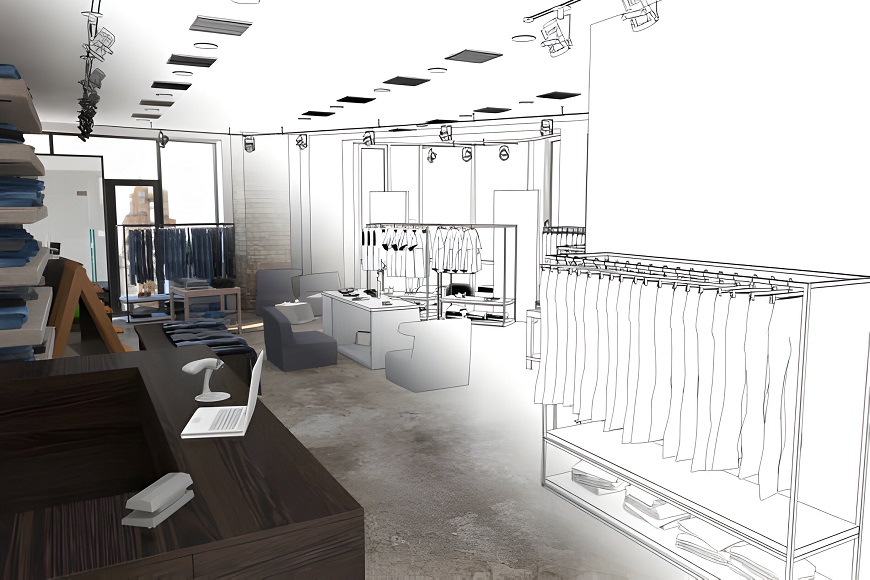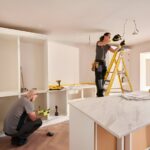Can a well-designed shop space alter the trajectory of your business? How does a brilliantly executed shop fit out influence the customer experience? Is there a connection between the two? Welcome to a fascinating exploration where we delve into the world of shop fit outs and their impact on consumer experiences. This blog post seeks to understand that delicate interplay between aesthetics, function, and how both work together to mold customer perceptions.
Shop fit outs are more than just designing spaces; they’re embodiments of your brand and a testament to your understanding of customer needs. Architecture, design, and psychology intersect in this space, creating an environment that’s not just delightful but also converts casual window shoppers into loyal patrons.
Our discussion navigates through various aspects – why is a fit out important, what makes a good one, how it affects customer experience, besides evaluating its pros and cons. Buckle up for this enlightening journey, promising to change the way you perceive retail design and its dynamic connection to customers’ experiences.
The Anatomy of a Successful Shop Fit Out: Why it Matters
As conventional retail battles the surge of online shopping, the emphasis on creating memorable in-store experiences has never been more pronounced. Here’s where shop fit outs step in – shaping an attractive, practical, and sensory-stimulating space that gives the customer every reason to linger and return.
A well-executed shop fit out becomes the visual manifestation of your brand story. It creates that first crucial impression, making your brand ethos visible and engaging.
Moreover, fit outs are designed with the customer at heart. Think of it like a stage set for shop-goers, intending to guide them through a planned sequence of encounter, exploration, and purchase. The right fit out ensures that every customer’s visit transforms into an immersive experience that establishes a strong emotional connection with the brand.
What Makes a Great Shop Fit Out
The finest shop fit outs are those that skillfully marry aesthetics with function, aligning the physical retail space with the brand’s identity and customer preferences.
A great fit out caters to the demands of visual merchandising, promoting effortless navigation, and enabling seamless interactions with products and services.
Incorporating visual appeal, smart architecture, sustainable materials, effective lighting, and comfortable furnishings allow the design to speak volumes about the brand’s commitment to quality and customer satisfaction.
Fit Outs and The Customer Experience: The Connection
A retail shop’s physical environment directly influences the behavior of its customers. A well-designed fit out can enhance customer mood, provoke interest in products or services, and even sway purchasing decisions.
The influence of fit outs extends beyond mere tangible aspects to include intangible elements like ambience, atmosphere, and perceived brand pedigree.
Moreover, fit outs accommodate technological integration, offering digital touchpoints to match the evolving expectations of the modern shopper, seamlessly blending physical shopping with the digital world.
Pros Of a Well-Designed Shop Fit Out
A good shop fit out can be a game-changer for retail businesses. It enhances visual appeal, drawing in foot traffic, and facilitating customer retention through positive shopping experiences.
Furthermore, it presents an opportunity to manifest the brand identity and narrative visually, fostering an emotional bond with the customer.
Lastly, it makes for a more productive retail space that is adaptable, efficient, and resonates with your target customers’ aspirations and lifestyle.
The Flip Side: Cons of Shop Fit Outs
Shop fit outs, while advantageous, come with their share of challenges. High upfront costs, potential business interruptions during the renovation period, and the need for regular upkeep and updates, to name a few.
There’s also the risk of misalignment of design and brand intent, which could potentially confuse or disenchant customers.
Lastly, a badly executed fit out can adversely impact the shop’s functionality and customer flow, leading to a poor shopping experience.
Conclusion
Shop fit outs serve not just as vehicles of aesthetic appeal but also as influential mediums impacting customer behavior and brand perception. Their power extends beyond orchestrating (re)branding efforts to orchestrating profitable customer actions.
However, reaching the fine balance of branding, functionality, and customer accommodation can be tricky. Realizing that an excellent fit out is a concerted effort, meticulously strategizing, and synchronizing brand objectives, customer needs, shop flow, and visual merchandise is crucial.
While the path to executing appealing fit outs isn’t without obstacles, their transformational potential for brick-and-mortar retailers is undeniable. Businesses seeking an edge in the competitive retail landscape can undoubtedly find it in a well-crafted shop fit out, an investment that can turn your shop floors into theatres of customer delight!


